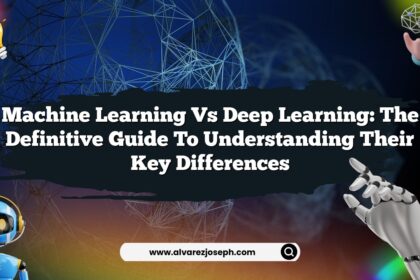Ever tried to bake a complex recipe and felt overwhelmed by the sheer number of steps involved? Machine learning feels a bit like that sometimes, doesn’t it? You’re dealing with heaps of data, intricate algorithms, and a whole lot of hopes riding on the outcome. But just like baking, mastering machine learning is about understanding the basics, adding the right ingredients at the right time, and being patient enough to see it through. Ready to embark on this intellectual culinary journey?
Understanding the Basics of Machine Learning
At its core, machine learning is about training computers to learn from data. Imagine teaching a dog to fetch. You throw a ball (input data) and expect the dog to bring it back (desired outcome). Machine learning is about finding the best way to throw the ball so the dog learns to fetch without errors. But, how do we get there?
The Role of Data in Machine Learning
Data is the lifeblood of machine learning. Without data, your machine learning model is like a car without fuel. But it’s not just about any data; it’s about having quality data that’s relevant, clean, and correctly formatted. Ask yourself: Is my data representative of the problem I’m trying to solve? If not, you might just end up barking up the wrong tree.
Algorithms Unveiled
Algorithms are the recipes that transform your raw data into meaningful predictions. Think of them as the secret sauce in your learning model. From decision trees and neural networks to support vector machines, each algorithm has its own charm and challenges. The trick is knowing which one to use for which problem. Can you imagine using a fork to eat soup? Yeah, it’s kind of like that.
Setting Up Your Machine Learning Environment
Before diving into model training, setting up the right environment is crucial. Picture a chef preparing their kitchen: clean counters, sharp knives, and fresh ingredients. Similarly, a developer needs a robust environment.
Choosing the Right Tools
In the world of machine learning, tools like Python, R, TensorFlow, and PyTorch are your spatulas and mixers. Each has its strengths. Python, for instance, is popular for its simplicity and versatility. It’s a bit like the Swiss Army knife of coding. But why stop there? Exploring multiple tools can sometimes unveil shortcuts you never imagined.
Your First Model: A Step-by-Step Guide
Building your first model can be a thrilling yet daunting experience. Think of it as your first attempt at making that complicated dessert. You might not get it perfect the first time, but with each iteration, you get closer to perfection. Start simple, perhaps a linear regression model, and gradually add complexity as you gain confidence.
Overcoming Challenges in Machine Learning
Every machine learning project comes with its own set of challenges. But fear not! With the right mindset and strategies, these can be turned into learning opportunities.
Handling Missing Data
Missing data can be a real party pooper. It’s like trying to solve a puzzle with missing pieces. But don’t fret. Techniques like imputation, interpolation, or simply removing incomplete data can help fill those gaps. Remember, it’s about playing the hand you’re dealt with finesse.
Avoiding Overfitting and Underfitting
Imagine learning to play the piano. If you only practice one song (overfitting), you might miss out on the broader skills needed for other tunes. Conversely, if you half-heartedly practice multiple songs (underfitting), you might not master any. In machine learning, it’s about striking the right balance between specificity and generalization. Cross-validation and regularization techniques can be your best friends here.
Measuring Success: Evaluating Your Models
Once your model is up and running, how do you know if it’s any good? Model evaluation metrics are your report card, telling you how well you’ve done.
Key Metrics to Consider
Accuracy is great, but it’s not the end-all. Depending on your problem, metrics like precision, recall, F1 score, and AUC-ROC can give you a better picture. Imagine throwing a dart. Accuracy is hitting the board, but precision is hitting the bullseye consistently. So, what’s your target?
Refining and Tuning
Like a sculptor refining their masterpiece, your model may need adjustments. Hyperparameter tuning can be pivotal in enhancing performance. Tools like Grid Search and Random Search can help find that sweet spot. Remember, sometimes small tweaks can produce spectacular results.
Real-World Applications of Machine Learning
Machine learning isn’t just theoretical; its applications are vast and varied. From predicting stock prices to diagnosing diseases, the possibilities are endless. Ever wondered how Netflix knows exactly what you want to watch next? Yep, you guessed it—machine learning!
Inspiring Success Stories
Consider how self-driving cars use machine learning to revolutionize transportation. By processing vast amounts of data in real-time, these cars can make split-second decisions, potentially saving lives. Or think about how virtual assistants, like Siri and Alexa, have transformed our daily interactions through natural language processing.
Quick Summary
- Data is king: Quality data is essential for effective machine learning.
- Algorithm selection is key: Choose wisely for the best outcomes.
- Set up a robust environment: Tools like Python and TensorFlow are pivotal.
- Start small with models: Begin with simpler models and complexify gradually.
- Tackle challenges head-on: Use strategies for missing data, overfitting, and underfitting.
- Evaluate your efforts: Use metrics beyond accuracy to determine success.
- Refine and enhance: Hyperparameter tuning can significantly improve models.
- Real-world impact: Machine learning is transforming industries globally.
- Stay curious: Keep exploring and learning from new developments.
- Persistence pays: The journey might be long, but the rewards are immense.
Frequently Asked Questions
What is machine learning in simple terms?
Machine learning is a method of teaching computers to learn from data and make decisions without being explicitly programmed for specific tasks.
How do I choose the right algorithm for my problem?
Consider the nature of your data and the specific problem you’re trying to solve. Experimenting with different algorithms can help determine the best fit.
Why is my model not performing as expected?
Many factors can affect performance, such as data quality, overfitting, underfitting, or incorrect algorithm choice. Revisiting these areas can help identify issues.
How can I improve my model’s accuracy?
Techniques like cross-validation, hyperparameter tuning, and feature engineering can enhance model accuracy.
What real-world applications leverage machine learning?
Machine learning is used in various fields like finance, healthcare, automotive, and entertainment, offering solutions from fraud detection to personalized recommendations.
Do I need a strong math background for machine learning?
While a basic understanding of statistics and probability is helpful, many tools and resources are available to guide those without an extensive math background.
And there you have it! Machine learning isn’t just about complex algorithms and tons of data—it’s a journey of exploration, creativity, and constant learning. With each step, you get closer to mastering this fascinating domain. So, are you ready to take the plunge and see where it leads you?












